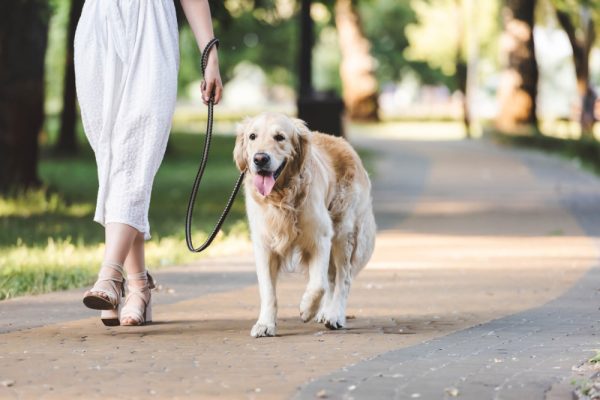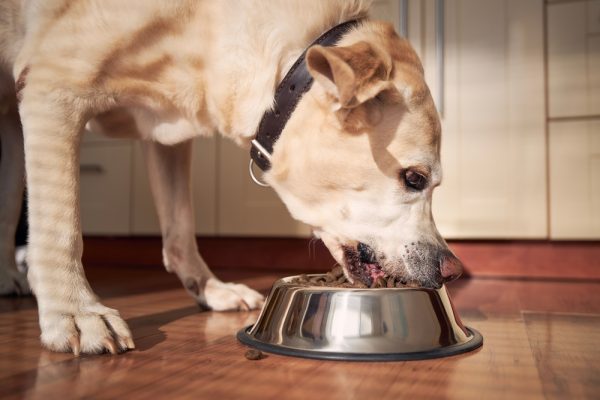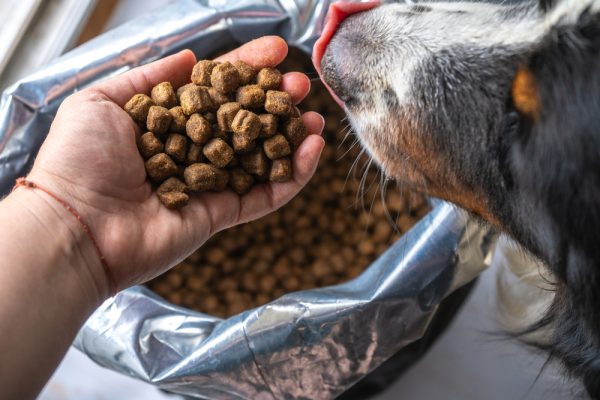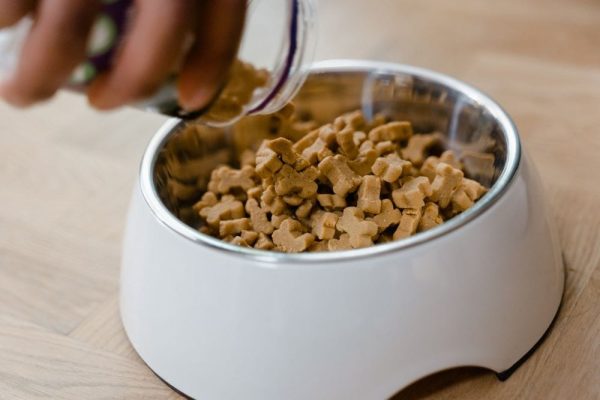In this article
View 8 More +Labrador Retrievers need practically no introduction, as they are among the most popular dog breeds worldwide. When you meet one, it’s easy to understand why.
Labs make wonderful companions for almost anyone, so if you’re interested in learning more about these outstanding canines, read on!
Breed Overview
Height:
21.5 – 24.5 inches
Weight:
55 – 80 pounds
Lifespan:
11 – 13 years
Colors:
Yellow, chocolate, black
Suitable for:
Active families or singles, house with a yard
Temperament:
Energetic, lovable, friendly, playful, outgoing, smart
Labrador Retrievers have been so popular over the years that almost everyone has likely met at least one at some point. They adore being around their families, and their exuberance for nearly everything helps explain their popularity.
Labs typically come in three colors—yellow, chocolate, and black—and they have smooth, waterproof double coats. They are hard-working large breeds used for hunting and other jobs, such as in search and rescue and as service dogs.
Labrador Retriever Characteristics

Labrador Retriever Puppies

Finding a Labrador Retriever puppy should be quite easy, as a breeder is bound to be near your location. Just ensure that you find an ethical breeder, and ask plenty of questions to ensure that you’re not supporting a puppy mill.
You can also consider adopting a rescued Lab puppy, adult, or senior. Since these dogs are so popular, it shouldn’t take too long before one shows up at your local shelter or rescue organization.
Adopting a rescue dog will cost less than purchasing a puppy through a breeder and give a homeless dog a new chance at a better life.
Labrador Origin & History
Although celebrated for friendship with humans, Labrador Retrievers were developed to work. Predecessors of the breed assisted Newfoundland fishermen off the Labrador Sea shores in Canada. They worked diligently alongside their owners in freezing temperatures and icy waters. The dogs helped bring in nets and gather fish escaping from the lines.
Well-known for athleticism and energy, early Labrador Retrievers wanted to play, even after long work days. In the 1800s, Labrador Retrievers were exported to England and further developed as gun dogs. The dog’s task was to retrieve dead and wounded game, delivering it to the hunter undamaged.
The Labrador as a Working Dog Today
The Labrador’s soft mouth, swimming skills, and water-resistant coat make them a popular breed with today’s hunters. Labs (especially those bred from field lines) will work all day, flushing upland birds or retrieving downed waterfowl. But new jobs have arisen for the adaptable Labrador.
The breed stands out in search and rescue, narcotics detection, as well as water and avalanche rescue. Our armed forces deploy Labradors extensively as explosive detection dogs.
Labs guide the vision-impaired, provide aid to autistic children, offer brace and mobility support, work as hearing dogs for the deaf, and serve as diabetic alert dogs, to name a few of their service jobs. Of course, Labs excel in sports, too, taking the podium in obedience, rally, tracking, dock diving, and field trials.

Temperament & Intelligence of the Labrador Retriever
Labrador Retrievers are sweet and outgoing dogs that love practically everyone they meet. They are adaptable and can be gentle when they aren’t being silly goofballs!
Labs are known for their intelligence and their absolute exuberance for everything. Also, when they aren’t running you ragged, they enjoy a nice cuddle at the end of the day.
Are These Dogs Good for Families? 🧑🧑🧒

A Labrador Retriever is the perfect family dog! They are exceptional around children, as they are loving, playful, and not known to be aggressive. But bear in mind that you must teach your children how to handle the dog respectfully. This means they shouldn’t ride your dog like a horse or pull on their ears and tail, even if your dog tolerates it.
If you have your children help take care of your dog, this can help instill a sense of responsibility and respect for the family pet. No matter how much you trust your Lab, they should never be left unsupervised around young children.
Does This Breed Get Along With Other Pets? 🐶🐱
Absolutely! It’s essential that your Lab receives the appropriate socialization so they will readily accept the cat or any other small animals that you might have. They also tend to get along exceptionally well with other dogs.

Things to Know When Owning a Labrador Retriever
Food & Diet Requirements 🦴
Feeding your Lab involves purchasing a high-quality dog food formulated for your dog’s current weight, age, and activity level. Whichever food you choose, follow the guidelines on the label for the amount that you should be feeding your dog. Go easy on the treats—Labs are known for putting on weight.
You should always have fresh and clean water available for your Labrador at all times.
Exercise 🐕

Labrador Retrievers need a great deal of exercise! They have boundless amounts of energy and will need about 1 ½ hours of exercise at a minimum every day.
They need to walk and have the opportunity to play fetch and run daily. You can also take them hiking, biking, and swimming, which they love!
Training 🎾
Training the Labrador is considered easy, so they make great dogs for beginners. They are intelligent and eager to please and will pick up tricks and commands quickly.
Labs need training or they can get rowdy, so plenty of socialization and obedience training is required—only using positive reinforcement, of course.
Grooming ✂️

Grooming the Lab is easy but necessary. They are a double-coated dog, which means they shed a fair bit in the spring and fall. Their short, smooth coat can be groomed with a grooming glove and a metal comb.
When they blow their coat (when they shed excessively during the shedding seasons), you’ll want to brush them daily, but otherwise, several times a week should suffice. Bear in mind that you should never shave a double-coated dog, as it will ruin the coat.
You’ll only need to bathe your Lab every 4 to 6 weeks with good dog shampoo. Additionally, stay on top of nail trims every 3 to 4 weeks, clean the ears when needed (check them weekly and clean when necessary), and brush their teeth daily or several times a week, at the very least.
Health and Conditions 🏥
Labradors are healthy dogs overall, but like all purebreds, they can be susceptible to several genetic disorders.
- Ear infections
- Progressive retinal atrophy
- Elbow dysplasia
- Tricuspid valve dysplasia
- Hip dysplasia
- Hemangiosarcoma
- Exercise-induced collapse
Male vs. Female
Female Labs are smaller and lighter than males. Male Labradors can measure 22.5 to 24.5 inches and weigh 65 to 80 pounds, whereas females measure 21.5 to 23.5 inches and weigh 55 to 70 pounds.
Then there’s the whole reproductive thing to consider. Having your Lab spayed or neutered is an important step to take for a family pet. Bear in mind that spaying a female is more costly and the procedure more invasive than neutering a male.
As far as temperament goes, male Labs might be more playful and goofier than females. In contrast, female Labs are thought to pick up training faster and might be slightly less affectionate than the males.
That said, what truly affects a dog’s temperament is how they were raised, socialized, and trained. Also, every dog is unique and will have their own personality.

3 Little-Known Facts About the Labrador Retriever
1. Labradors Are Not Actually From Labrador
The Labrador Retriever was discovered in Newfoundland, where they were used as duck retrievers and for helping fishermen—they are true water dogs! English nobles visiting Canada fell under the Lab’s spell. They brought them to England, where the breed was refined until they became the dogs that we love today. No one really knows why the dogs were called Labradors, but the name stuck.
2. Labs Come in More Than Three Colors
Labradors are famous for their yellow, chocolate, and black colors. But you can also find them in silver and red fox. Silver Labs are technically chocolate with a dilution gene, which causes their coats to be lighter in color. The red fox Lab is thought to be a darker version of the yellow Labrador. But these colors are not recognized and can be quite rare. It’s believed that the Lab has to be crossbred to achieve the silver color, which means they aren’t considered purebred.

3. The Labrador Recently Lost Their Most Popular Dog Title in the U.S.
Labrador Retrievers were the number-one most popular breed in the United States for 31 years! Labs topped the dog charts starting in 1991, but the French Bulldog took the first spot in 2022, dropping the Lab down to second place.

Final Thoughts
The Labrador Retriever has long been the most popular dog for decades in countries worldwide for a reason. This breed is loving, playful, easy to train, and full of personality!
You can find one with an ethical breeder or look for a Lab at your local animal shelter. There are also rescue groups devoted to just Labradors, like Labs4Rescue.
Labs are great dogs for just about anyone, as long as you give them the appropriate training and the exercise that they need to stay physically and mentally healthy.
Featured Image Credit: Alexander Rim, Shutterstock



















